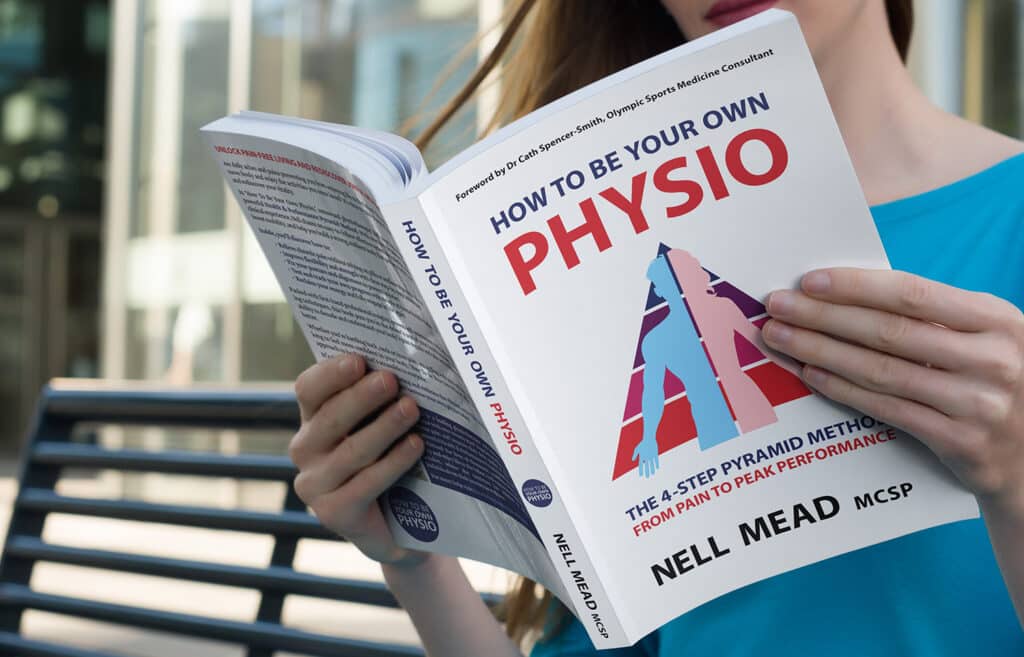Over the past few weeks, I’ve been writing about Diane Lee’s Integrated Systems Model (ISM), which is a big part of how I work. I’ve explained how I found Diane, how the ISM works with the published evidence, and the theory of regional interdependence from which the ISM derived. As everyone’s body and movement patterns are (and should be) different, I then wrote about the meaning of optimal movement as opposed to suboptimal movement with areas of failed load transfer (FLT). We went through how we assess for FLTs during screening tasks, corrected his impairments to find our driver, found the vectors – and finally, we identified the underlying system impairment. So now it’s time to work out a bespoke treatment plan for our fictional patient, David.
We know that David’s knee pain on walking is driven by an alignment problem in his right hip, with a neural/myofascial vector into his overactive tensor fascia lata (TFL). (If you’ve not been following along, and this doesn’t make sense, go back and read the previous posts about David!)
Muscle balance
I’ve previously written about issues of muscle balance, and this is a classic example. The TFL is a power muscle and is supposed to flex/adduct/internally rotate the hip when such movements are appropriate, but David’s TFL seems to have got stuck in the “on” position. This means that his hip is pulled forward in the socket, and his stabiliser muscles (in this case, the posterior fibres of gluteus medius that I discussed in my series on the Lazy Bum Epidemic) is not able to function normally.
We know that if we do not teach David to switch off his TFL, then his gluteus medius will not be able to function normally. We do not know whether gluteus medius has actually weakened though, because in the presence of an overactive TFL, the best gluteus medius in the world wouldn’t be able to overcome it. The TFL has to switch off first.
There are many treatment techniques that therapists can use to reduce the tone of the TFL, and the technique you use should fit with the underlying system impairment. Some examples of treatment techniques include:
• Manipulation (if the underlying system impairment were articular, which David’s isn’t)
• Acupuncture (neural/myofascial system)
• Positional release (neural/myofascial)
• Massage (neural/myofascial)
• Trigger point release (neural/myofascial)
• Craniosacral therapy (neural/dural – Diane has been teaching more of this in the past couple of years)
• Visceral release (visceral)
Release with Awareness
A treatment technique that seems to be specific to the ISM is that of the Release with Awareness, or RWA. In terms of the therapist’s technique, it’s not dramatically different to massage or trigger point work; the difference is in the patient’s engagement, which helps to teach the central nervous system to behave differently, giving a longer-term result.
I’ve created a video showing how to do a RWA for the TFL here; but in essence, the steps are:
• Find the area of greatest tension in the TFL and palpate it.
• Shorten the distance between the origin and insertion of the TFL – this means move the hip into flexion, adduction and internal rotation.
• Wait for 15-20 seconds.
• Explain to the patient that they need to relax/lengthen/soften the muscle under your fingers (there are many ways to cue this, and different cues will work better for different patients; the important thing is that the patient is consciously relaxing their TFL)
• Gradually lengthen and stretch the muscle (move towards extension, abduction and external rotation) while the patient focuses on keeping it relaxed and soft.
• Use the cues you have found to be most effective for the patient, and teach them to do this for themselves at home.
Does he need any more treatment?
Once you have achieved reduced tone in his TFL, it’s time to retest David’s screening task, the right sided one leg stand. Use the cues again – David has to consciously relax and lengthen through his right TFL as he transfers his weight onto his right foot. Meanwhile, as his therapist you will be monitoring his right hip position to see whether he still has a FLT; and David will let you know how his knee feels as he loads it.
This is how we work out whether David needs to work specifically on his glutes or not. If he is able to maintain good alignment of his right hip, using just his cue to relax his TFL, then he does not need to retrain his gluteus medius – he just needs to really retrain his TFL to stay relaxed, and to trust that the gluteus medius will do its job. However, if he is not able to maintain the alignment of his hip through relaxing his TFL, then he does need to work on the hip stabilisers.
If he is able to produce good quality movement, then we would start David off by practising his right one leg stand, using his cues. He knows when his knee hurts or doesn’t hurt, so it’s easy for him to tell when he’s getting it right or not!
If he doesn’t have the strength in his glutes to manage this, then we will regress and teach him to dissociate between his stabilisers and his TFL in less challenging positions until he is ready.
On the other hand, if David is easily able to manage a one leg stand with good hip alignment and no knee pain, then he can progress to more challenging tasks and exercises, depending on what he ultimately wants his knee to be able to do. If he just wants to be able to walk, then we will build up to that. But if his real goal is to run a marathon, compete in Ultimate Ninja Warrior, or perform with the Cirque du Soleil, then we will need to keep challenging him to maintain hip control in tasks requiring increasing amounts of strength, flexibility and endurance. The aim is to give him enough capacity in his system to be able to achieve the things he wants to do, without triggering his symptoms.
Treatment planning
Diane’s acronym for building a treatment and rehabilitation programme is RACM: Release, Align, Connect and Move. The Release is appropriate when there is dominance of a power muscle; Align (or retraining of the stability system) is only really needed if the stabilisers are underactive. Connect is about using cues to maintain the alignment consciously; and Move is about maintaining alignment through movement. This is the sequence I use except in the case of a patient who has a hypermobility disorder.
Patients with hypermobility issues do suffer from muscle balance problems, just as the rest of us do; but they struggle more if their stability systems are underactive. With patients who do not have hypermobility, I am fairly safe to do a lot of release work; hypermobile patients often react badly to this, with a flare-up of symptoms. I therefore put much more emphasis on retraining the stability systems when it comes to patients with hypermobility; and focus on this almost before the release.
So… that’s David! Over the past few weeks, we’ve worked out where his problems are coming from, where we should start treatment, and what he needs to do to maintain his improvement for the long term. If you’d like to experience the David treatment, just click the button below, or call my team on 0207 175 0150 to book an assessment session. And if you’re a physio and you’d like to learn how to treat patients like David, it’s time to visit Diane’s website and book yourself onto a Series!







